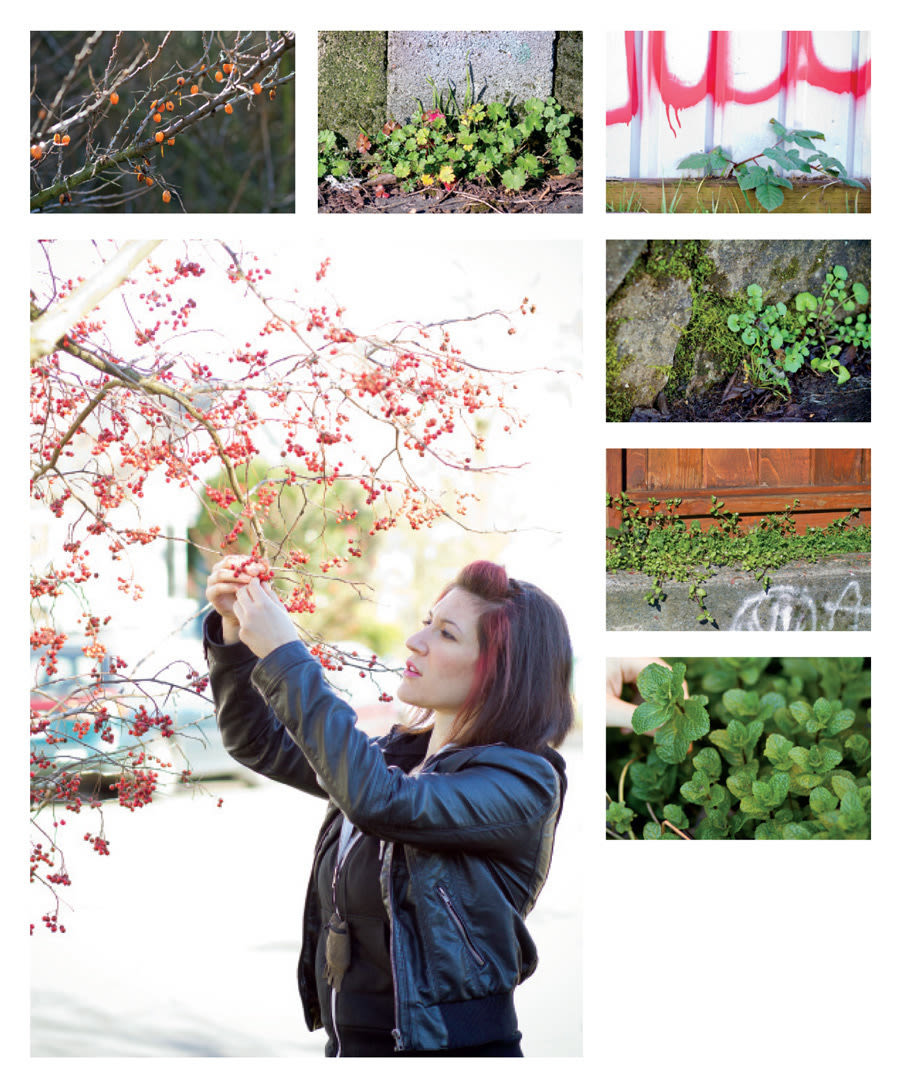Foraging the Streets of Northeast Portland

Image: Dylan Harkavy
Rebecca Lerner stops along a low concrete wall on NE Alberta Street and points down at a clump of green leaves poking out of a crack. Where some see weeds, Lerner sees teas, vitamins, soups, and tools. “This is a place I would harvest from,” she says. “It would be really hard for a dog to get up here. It’s a pretty safe spot with a lot of different plants.”
Five years ago, Lerner started a popular foraging blog and began leading educational tours around her Alberta hood. This month, the respected outdoors-oriented press Globe Pequot publishes her first book, Dandelion Hunter: Foraging the Urban Wilderness. The memoir/manual chronicles Lerner’s exploits with weeds and encounters with the resourceful locals who scour the cityscape for food.
As she strolls on, Lerner points to berries, bushes, ferns; she can recite their uses, tastes, medicinal properties, and historical applications. “This is yucca,” she says, for example. “I’m very excited about this. The ends are so sharp, you can use them as sewing needles. The root is actually fish poison, so you can pound it, put in still water, and then collect the stunned fish that float to the surface.”
In an emergency, the knowledge in Dandelion Hunter could save your life—or, come the Apocalypse, at least prolong the grim business of survival. In the meantime, Lerner can help city dwellers with adventurous palettes avoid plants that taste like bitter ash, and can point the way to some underappreciated hygiene options.
“This is chickweed,” she says as we sample a beautifully green, spiraling plant with a pleasant flavor. “It’s an all-purpose health food and detoxifier, loaded with vitamins. And over here is a kind of geranium—it tastes really bad, but it’s used as a medicinal astringent. It’s something you can douche with.” On a less gender-specific note, she points out purple dead nettle, a square-stemmed, fuzzy-leafed plant that tastes bad but at least isn’t poisonous.
To be honest, nothing tastes too great. But after two hours of exploring a five-block area with Lerner, the asphalt and concrete do seem different: now teeming with life and forgotten lore that she is working to revive. Auspiciously for Lerner, the publication of her book coincides with the beginning of spring and the start of prime foraging season. “Everything comes back,” she says.



